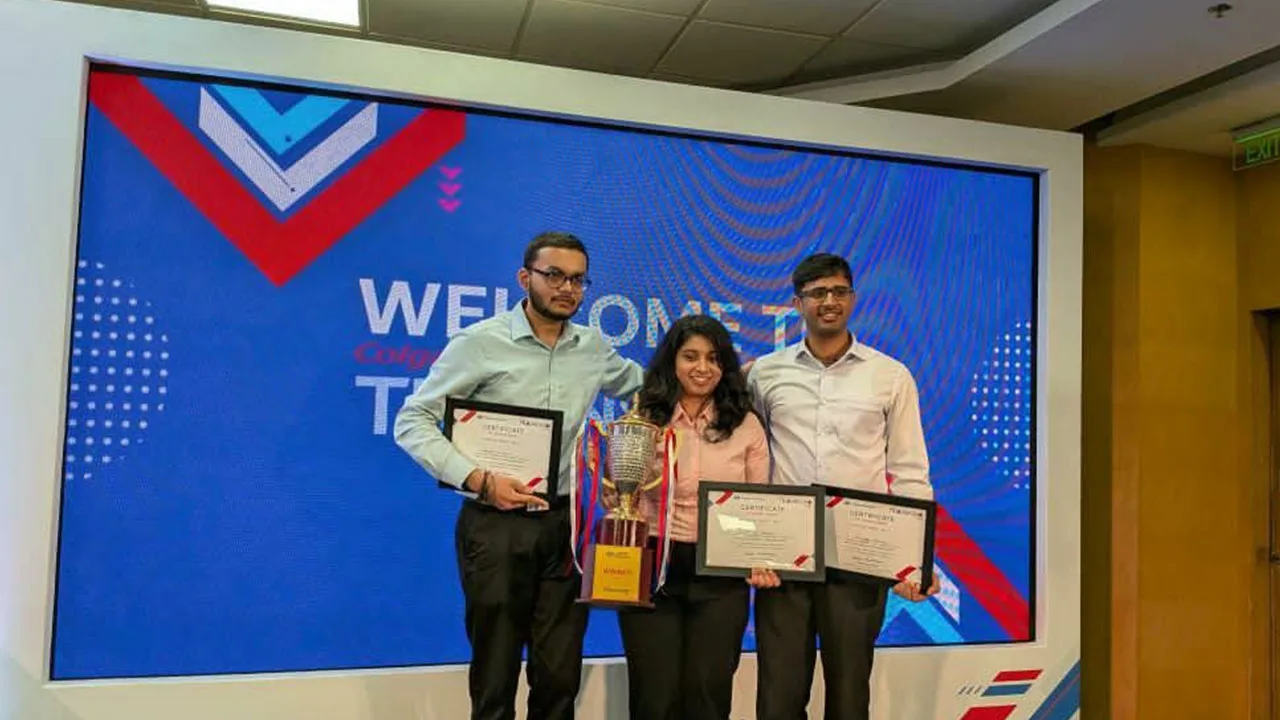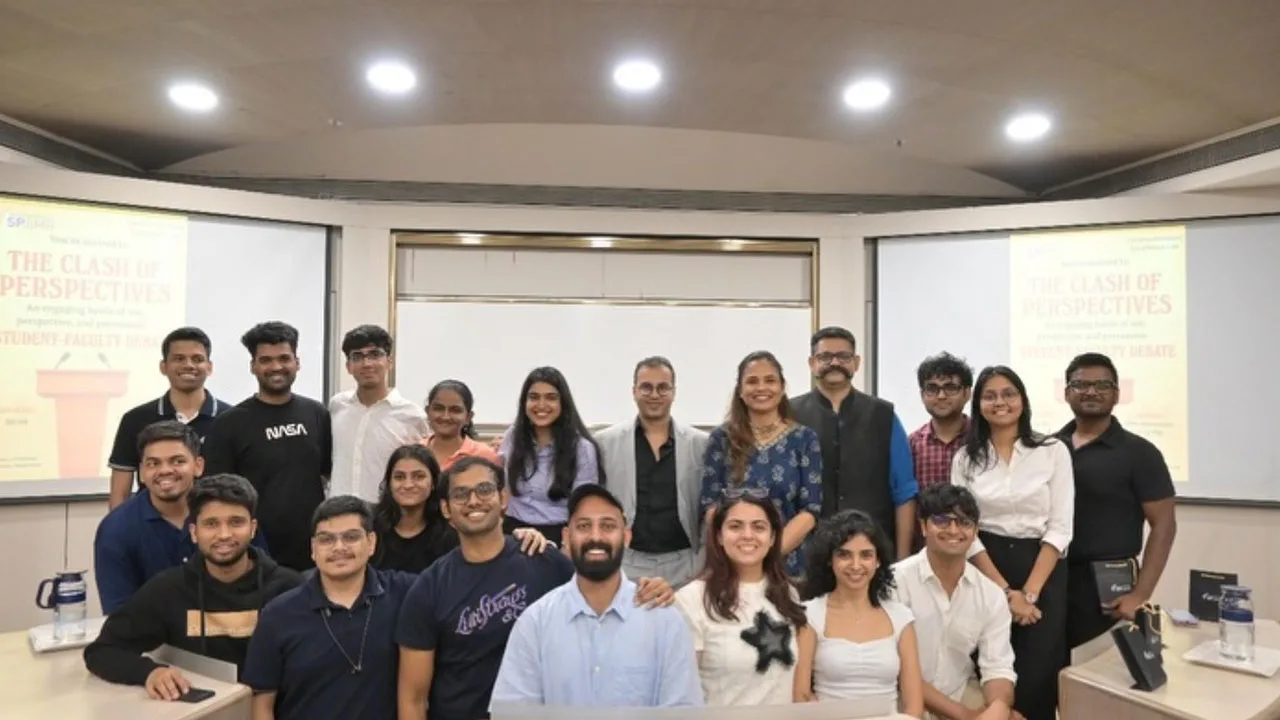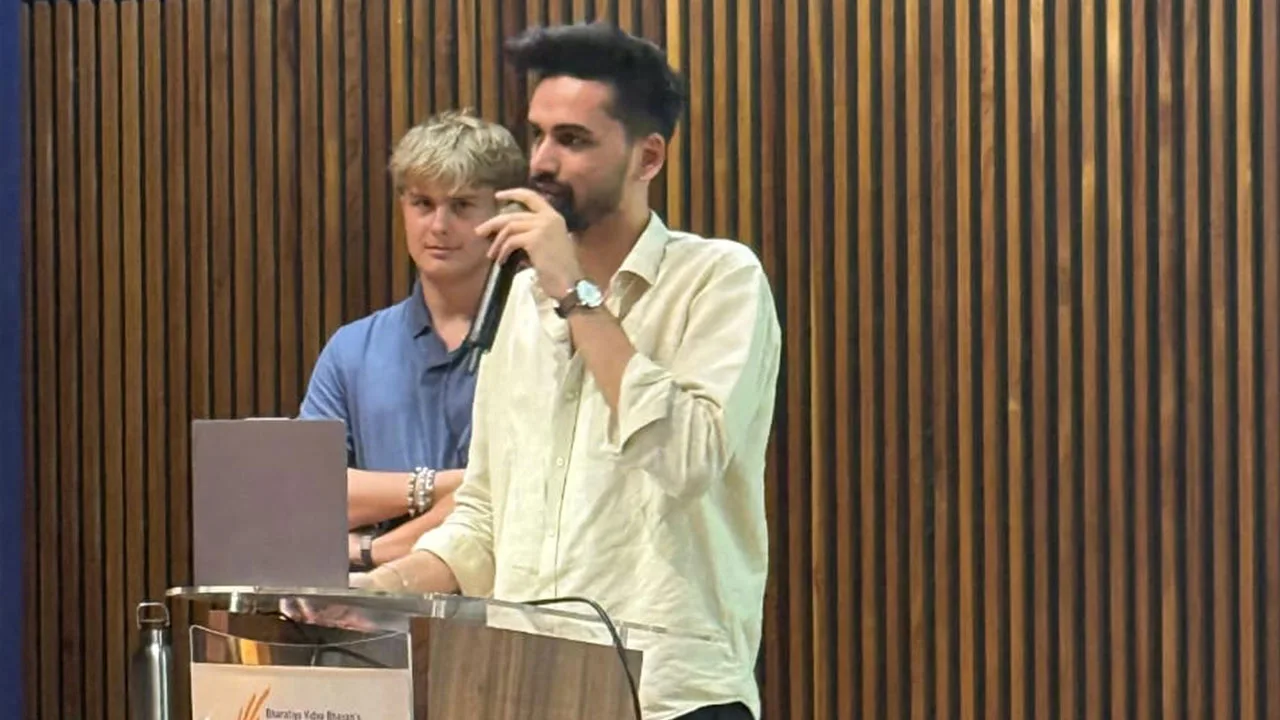Find the programme that meets your requirements and aspirations.
Apply nowStudent blogs
- SPJIMR
- Blog
- Learning to stand out: Insights from the LinkedIn masterclass at SPJIMR
Learning to stand out: Insights from the LinkedIn masterclass at SPJIMR
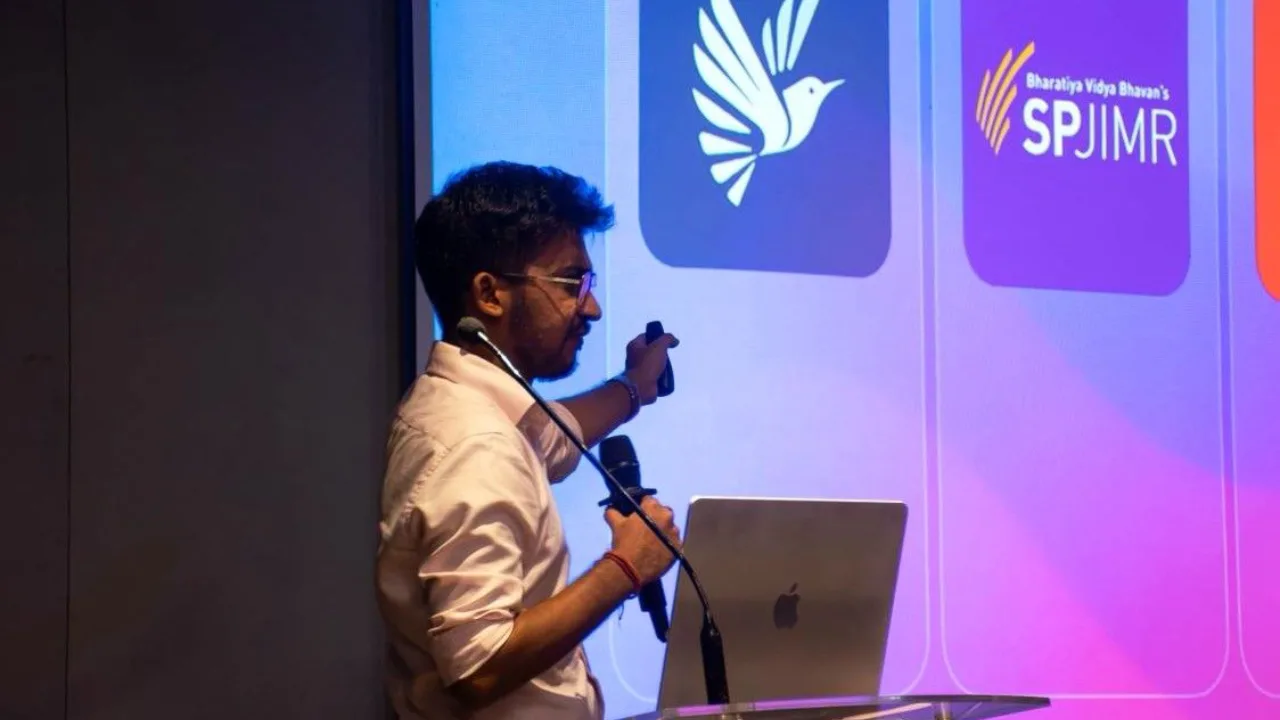
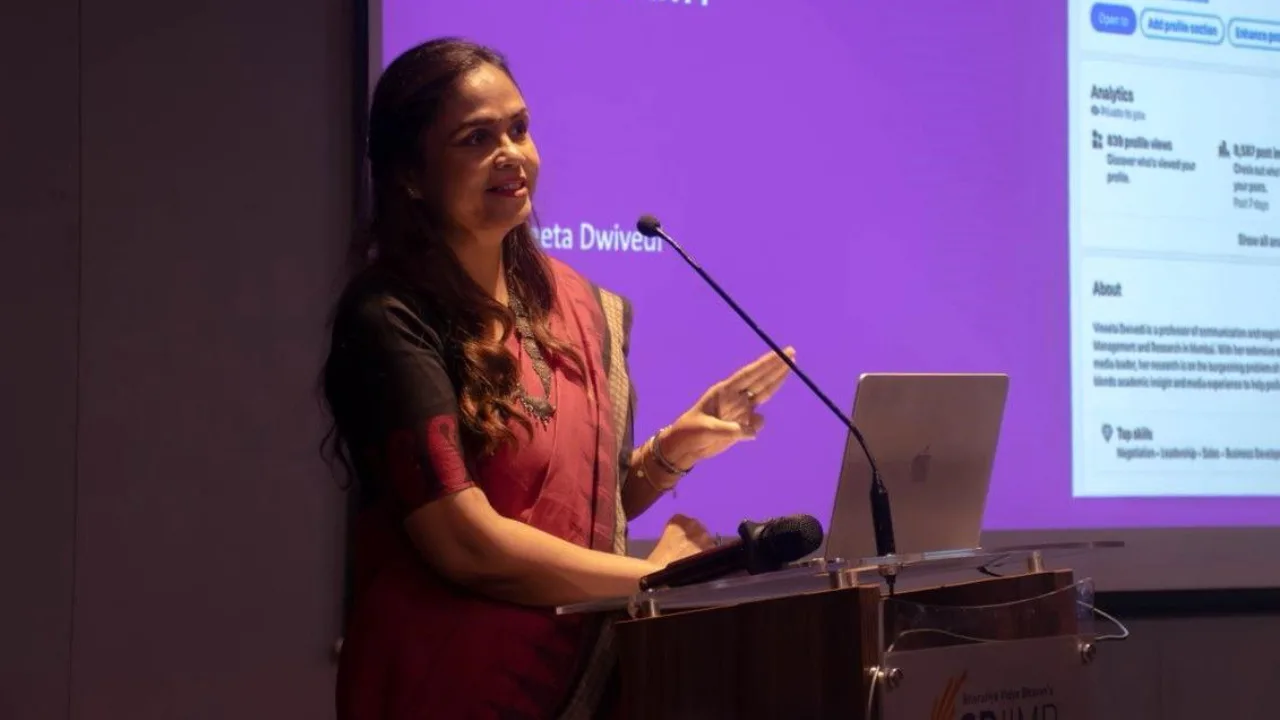

When I first stepped into SPJIMR as a wide-eyed student, I never imagined that the next few years would transform not just how I learnt but also how I thought, expressed myself, and connected with the world. The classrooms here were unlike anything I had experienced before alive with diverse opinions, rich conversations, and curious minds. Students from different backgrounds shared perspectives freely, and faculty members encouraged us to dive into the nuances behind every idea. Learning felt less like a structured activity and more like a continuous exchange of experiences and insights.
Amid this vibrant environment, I found a particularly meaningful space in the Communications Excellence Lab (CEL). It became a place where I could explore the impact of genuine communication, contribute to conversations that mattered, and understand how deeply human expression influences the world around us. Among the many initiatives I was part of, one stands out vividly: organising the LinkedIn masterclass, an event born out of a question that many of us at SPJIMR often grappled with—how does one stand out on a platform as crowded and competitive as LinkedIn, especially in India?
The workshop turned out to be an extension of everything SPJIMR had taught us: experiential learning, collaboration, and the seamless blend of theory with real-world relevance.
A masterclass rooted in real-world relevance
CEL organised the LinkedIn masterclass with the intention of helping students build meaningful professional identities in a digital space that shapes career every day. The session brought together three remarkable speakers—each representing a different dimension of insight: industry, academia, and personal experience. Their combined perspectives helped us understand the depth and complexity behind building an authentic presence on LinkedIn.
Benjamin Joy: The evolution and architecture of LinkedIn
Benjamin Joy, Agency Lead at LinkedIn India, began by grounding the session in the story of LinkedIn itself. What began as a simple networking platform has evolved into a global ecosystem committed to creating economic opportunity for every professional. Today, with more than 1.2 billion members worldwide and over 150 million in India, LinkedIn is not just a website; it is a living, breathing map of global professional life.
To help us understand the scale and structure of the platform, Benjamin broke down LinkedIn’s business verticals, each playing a distinct role in the professional ecosystem:
LinkedIn’s business verticals
| Business vertical | What it does |
|---|---|
| Talent solutions | Recruitment, hiring, and workforce planning for organisations |
| Sales solutions | Lead generation and relationship building for sales teams |
| Marketing solutions | Advertising and brand storytelling |
| Learning solutions | Upskilling and professional development via LinkedIn Learning |
| Premium subscriptions | Advanced tools for individual users to enhance visibility and growth |
All of these are tied together by the economic graph, LinkedIn’s ambitious effort to map global labour markets and make opportunities more equitable.
For many of us preparing to enter dynamic industries, this clarity helped us see LinkedIn as far more than a networking platform. It was an interconnected opportunity engine.
But perhaps the most powerful part of Benjamin’s talk was his explanation of the LinkedIn profile as a dynamic professional identity. A meaningful headline, a narrative-driven ‘about’ section, and an ‘experience’ section showcasing outcomes rather than responsibilities can transform how one is perceived. He encouraged us to treat our profile as a living portfolio that reflects intention rather than ornamentation.
Benjamin also dismantled the myth that LinkedIn rewards constant posting. Instead, he emphasised thoughtful participation—quality comments, reflective storytelling, and authentic insights—as the true drivers of visibility.
To help us understand how different professionals express themselves, he introduced the concept of Leadership Archetypes on LinkedIn:
Leadership Archetypes on LinkedIn
| Archetype | Focus | Role | Content style |
|---|---|---|---|
| Industry-focused leader | Trends and macro insights |
Visionary | Market outlook, future commentary |
| Brand-focused leader | Culture and organisational values | Evangelist | Culture stories, leadership values |
| Function/product leader | Technical or functional expertise | Teacher | Frameworks, guides, how-to breakdowns |
| People-focused leader | Personal growth and mindset |
Mentor | Reflections, lessons, self-improvement |
Understanding these archetypes helped many of us—including me—recognise that finding our voice on LinkedIn is not about imitation but alignment. It’s about speaking in a way that feels true to who we are.
Benjamin ended with a message that lingered long after the session: consistency builds recognition, and recognition builds trust.
Prof. Vineeta Dwivedi: Authenticity and presence from the inside out
Prof. Vineeta Dwivedi shifted the conversation inward by focusing on the foundations of an impactful presence—self-awareness, authenticity, and clarity. She explained that before thinking about content or visibility, one must first understand one’s values, motivations, and strengths. Only then does online expression feel natural rather than forced.
Her introduction of a BCG-matrix-inspired approach to content creation was particularly illuminating. She encouraged us to categorise our content into high-impact pieces that build credibility over time, quick wins that maintain presence, and low-value content that dilutes our voice. This structure helped simplify an otherwise overwhelming process, making content creation feel intentional instead of performative.
What stayed with me was her message that authenticity is not merely a stylistic choice—it is the foundation of sustainable professional identity.

Chetan Kejriwal: LinkedIn as a companion to growth
Chetan Kejriwal brought the emotional heart of the session. He shared how, early in his career, he chose not to join his family business and instead thread his own uncertain path. During those formative years, LinkedIn became more than a platform—it became a companion.
He spoke candidly about the vulnerability of posting publicly, the criticism he faced, and the doubts he battled. Yet, he chose to show up consistently. Over time, that consistency carved out a distinct voice for him, attracted like-minded professionals, and created an ecosystem of support, opportunity, and collaboration.
His philosophy, beautifully expressed, was simple: “To find opportunity, increase the surface area of your reach.” Every post, comment, and conversation expands that surface area.
Listening to him reminded all of us that professional growth is deeply intertwined with personal courage.
A workshop that reflected SPJIMR’s learning culture
For me, this masterclass felt like a reflection of everything SPJIMR stands for: the courage to express oneself, the freedom to explore meaningful ideas, and the belief that communication is leadership. CEL didn’t just teach us how to articulate better; it taught us how to connect authentically, think deeply, and express purposefully.
LinkedIn, as we discovered, is simply another space where these values take shape.
Conclusion
The LinkedIn masterclass reinforced something I sensed on my very first day at SPJIMR: learning is most powerful when it feels personal. LinkedIn is no longer just a platform for me; it has become a space where identity, expression, vulnerability, and opportunity meet.
And just like my journey at SPJIMR, my journey on LinkedIn is shaped by authenticity, clarity, and the willingness to show up even when no one else is watching.
About Post Graduate Diploma in Management (PGDM)
SPJIMR’s Post Graduate Diploma in Management (PGDM) is a two-year, full-time residential programme equivalent to an MBA. PGDM is approved by AICTE, accredited by NBA and AMBA, UK and consistently rates among India’s top 10 management programmes. The programme offers a holistic approach to leadership development with its innovative blend of classroom learning and thoughtfully curated immersive experiences.


